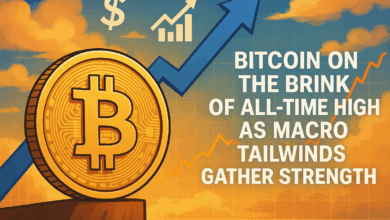Is Pi Coin the Next Big Thing? Where and How to Sell Pi Coin

For years, millions of people around the world mined Pi Coin on their phones with no way to cash it out or use it beyond the Pi Network itself. That’s now changing. With the launch of Pi Network’s Open Mainnet in early 2025, Pi Coin is finally being traded on real crypto exchanges. This is a major moment for early adopters who’ve patiently watched the project evolve since its launch in 2019.
If you’re among the many who’ve been mining Pi or have recently heard the buzz, you might be wondering: Is Pi Coin really the next big thing in crypto? Can I finally sell it? And if so, how? This article will walk you through what Pi Coin is all about, explore its potential, show you where and how to sell it, and help you decide whether you should hold or cash out.
Understanding Pi Coin and the Vision Behind Pi Network
Pi Coin is the native digital currency of Pi Network, a project created by a group of Stanford University graduates. Unlike traditional cryptocurrencies like Bitcoin and Ethereum, which require powerful computers and consume vast amounts of energy, Pi Coin was designed to be mined on smartphones with minimal energy use.
The project started in 2019 with a clear mission: make cryptocurrency accessible to everyone. Users could mine Pi simply by opening the app and tapping a button once every 24 hours. This approach helped Pi Network grow rapidly, attracting tens of millions of users across the globe. Over time, the app added social features, built a peer-to-peer marketplace, and started laying the groundwork for its own blockchain.
Until recently, though, Pi Coin existed only within a so-called Enclosed Mainnet—essentially, a test phase where the coin had no official market value and couldn’t be traded outside the Pi ecosystem. That changed in February 2025, when the team launched the Open Mainnet, marking the official entry of Pi Coin into the broader crypto market.
This move allows users to finally trade their mined Pi Coins on external exchanges and gives the cryptocurrency a real chance to prove its value.
Evaluating Pi Coin’s Potential: Could It Be the Next Big Thing?
Pi Coin has generated both enthusiasm and skepticism in the crypto space. Supporters believe it could become one of the most widely adopted cryptocurrencies, thanks to its mobile-first mining approach and massive user base. But like any new asset entering the open market, it also faces significant challenges.
Why many people are optimistic about Pi Coin
- Widespread adoption potential: With over 40 million users globally, Pi has one of the largest pre-existing communities in crypto. This gives it a head start when it comes to network effects and user-driven growth.
- Innovative mining model: Pi’s energy-efficient, mobile-based mining process makes it accessible to people who wouldn’t otherwise participate in crypto. This aligns with the growing demand for eco-friendly blockchain solutions.
- Strong development team: The project is led by Stanford-educated PhDs with backgrounds in computer science and blockchain technology. This academic pedigree adds credibility.
- Recent exchange listings: Pi Coin has already been listed on major exchanges like CoinW, Bitget, BitMart, HTX (formerly Huobi), and OKX. Trading volume has crossed the $1 billion mark at times, indicating serious interest.
However, it’s important to balance optimism with caution.
Why investors should remain careful and informed
- High price volatility: Pi Coin initially launched at around $1.97 but quickly dropped more than 60% to below $0.75. Price swings of this magnitude are common with new crypto assets, but they can be risky for investors.
- Limited real-world use cases: At this point, Pi doesn’t have a wide range of applications or partnerships outside its own ecosystem. Much of its value is speculative and driven by community belief.
- Unclear listing on major exchanges: Despite strong community support, Pi is not yet listed on Binance or Coinbase, two of the world’s biggest platforms. Until it gains access to these major marketplaces, liquidity and visibility may remain limited.
- Regulatory and operational risks: As with any crypto project, future success depends on navigating global regulations, scaling the network, and continuing to build developer tools and use cases.
In short, Pi Coin has significant potential—but it’s still early days. Whether it becomes the next big thing depends on its ability to convert community enthusiasm into real utility.
How to Sell Pi Coin: A Beginner-Friendly Guide
If you’re still deciding which exchange to use, the PI coin trading platform on CoinW is worth a look. CoinW is an emerging global exchange offering secure and user-friendly access to Pi Coin trading. With competitive fees, responsive support, and an intuitive interface, it has quickly become a popular choice for those looking to convert their mined Pi into more liquid assets.
Step 1: Create and Verify Your CoinW Account
Start by registering for a free account on CoinW. You’ll need to complete a basic identity verification (KYC) process, which only takes a few minutes and helps ensure a secure trading environment for all users.
Step 2: Deposit Your Pi Coin into CoinW
Once your account is verified, navigate to your CoinW wallet and find the Pi Coin deposit address. Use this to transfer your Pi Coins from your Pi Network wallet to CoinW. Double-check that you’ve entered the correct wallet address before confirming the transaction.
Step 3: Trade Your Pi Coin
After your Pi is successfully deposited, head to the trading section and select the Pi trading pair. You can sell your Pi for a stablecoin like USDT using a market order (which sells at the current price) or a limit order (which allows you to set your desired price). CoinW’s intuitive interface makes both options easy to navigate, even for first-time users.
Step 4: Withdraw or Reinvest
Once your Pi has been sold, you can choose to withdraw your funds or reinvest them into other trading opportunities available on CoinW. If you’re interested in more advanced trading strategies, you might also explore the PIUSDT Futures Trading pair, which allows you to trade Pi Coin with leverage based on price expectations.
Whether you’re cashing out your mined Pi or using it to dive deeper into the crypto market, CoinW provides a reliable and beginner-friendly way to manage your Pi assets.
Should You Hold Pi Coin or Sell It Now?
This is the most important decision you’ll make after years of mining. Should you sell now that you finally can—or hold onto your Pi and see where the project goes?
Reasons to Sell Pi Now
- The current price may be higher than it will be in the short term due to volatility
- You want to lock in profit or recover time spent mining
- You’re unsure about Pi’s long-term viability and don’t want to take on risk
Reasons to Hold Pi for the Future
- You believe the project will gain more adoption and value over time
- Pi is still not listed on top exchanges, so there’s potential upside
- You’re in no rush and want to see how the ecosystem evolves
There’s no one-size-fits-all answer. It depends on your personal risk tolerance, your financial situation, and how much Pi you hold. Some users may choose a hybrid approach—selling a portion now and holding the rest to hedge both short- and long-term outcomes.
Pi Coin’s Journey Is Just Beginning
The launch of Pi Network’s Open Mainnet marks a significant turning point for one of the most talked-about crypto projects in recent years. While Pi Coin is still in the early stages of real-world trading, its massive community, accessible mining model, and growing exchange support position it as a project worth watching closely.
Whether you decide to sell some of your Pi now or continue to hold it, remember that crypto is a fast-moving, high-risk space. Stay informed, follow trusted sources, and avoid making decisions based solely on hype.
Pi Coin may or may not become the next big thing in crypto—but one thing’s certain: it has the attention of millions, and its next steps will be closely watched by the entire industry.
Source link



